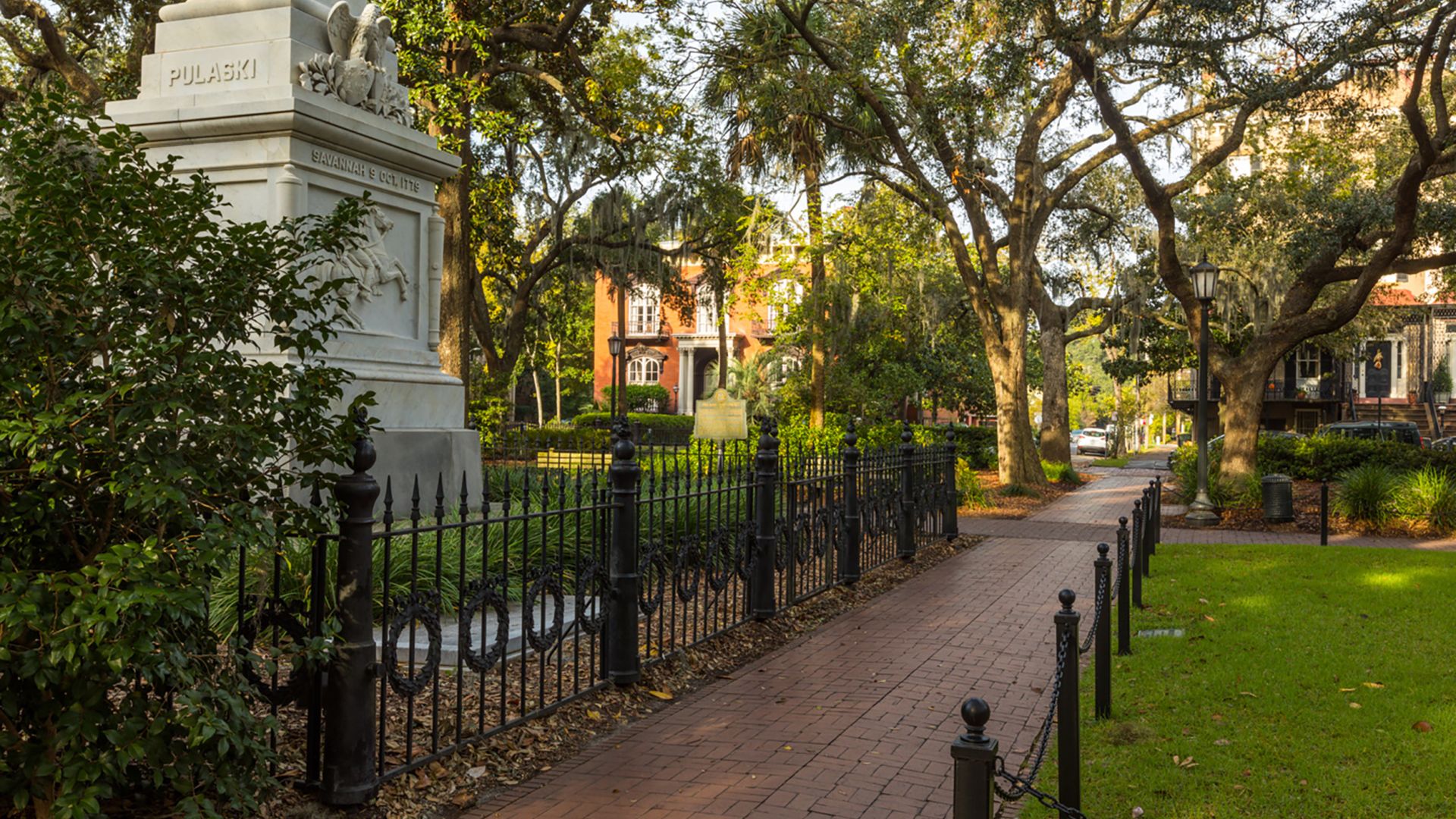The Savannah Historic District
Learn the stories behind the squares
In one of the most enduring expressions of enlightenment values, Savannah was built to evoke a utopian vision, as the country’s first planned city. The creation of General James Oglethorpe and Colonel Bull, the city’s original layout of Johnson, Ellis, Telfair, and Wright Squares grew to include 24 public squares by the 19th century. All named after pivotal figures in the history of the United States, the squares represent a repeating pattern across the city, each with its own flora, fauna, architecture, and symbolism. The humanist ideals that designed these spaces for introspection were more forward-thinking than anyone ever knew. Today, the city’s layout favors pedestrians over drivers, further engendering the easygoing pace of life so central to Savannah’s character.
Set off on a walking tour through Savannah’s Historic District, and see each square’s magnificent personality. Many — like Chippewa Square, immortalized in the movie Forrest Gump — will be immediately recognizable, while others are bordered by museums, historic homes, and institutions that beg for exploration. LaFayette Square is home to both the Hamilton Turner House and the Flannery O’Connor Childhood Home Museum. Greene Square’s Second African Baptist Church was the site where Major-General William Tecumseh Sherman announced the promise of "Forty Acres and a Mule" to the newly made freemen of Savannah in 1865. Monterey Square has the Hurn Museum of Contemporary Folk Arts and Congregation Mickve Israel at its perimeters. South of all of these, Forsyth Park attracts sun-loving denizens to its Parisian-style lawn surrounded by cafes, gardens and monuments.
Explore the heritage and history of the city while staying at our luxury Historic District hotel, and understand what sets Savannah apart as an American city.

